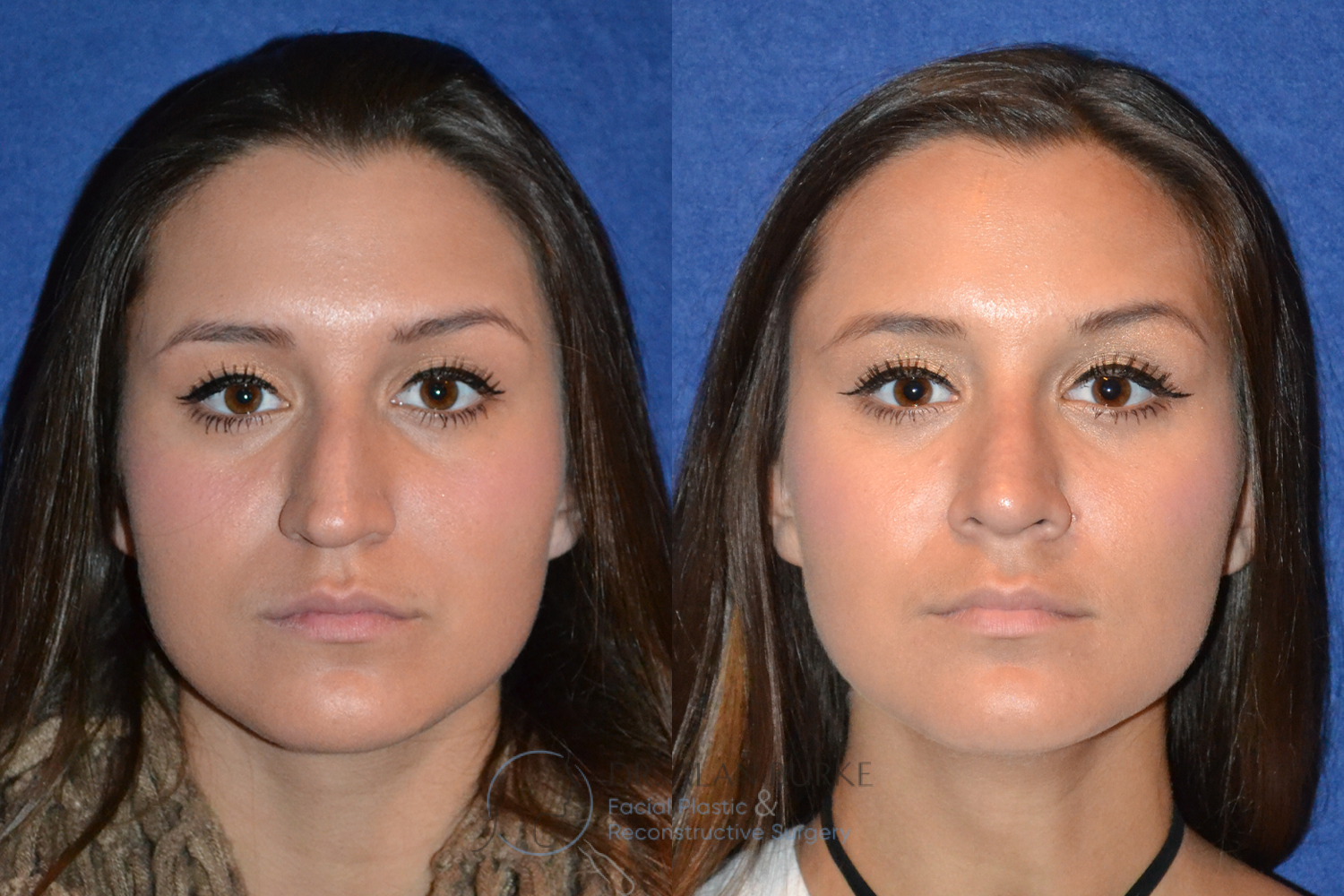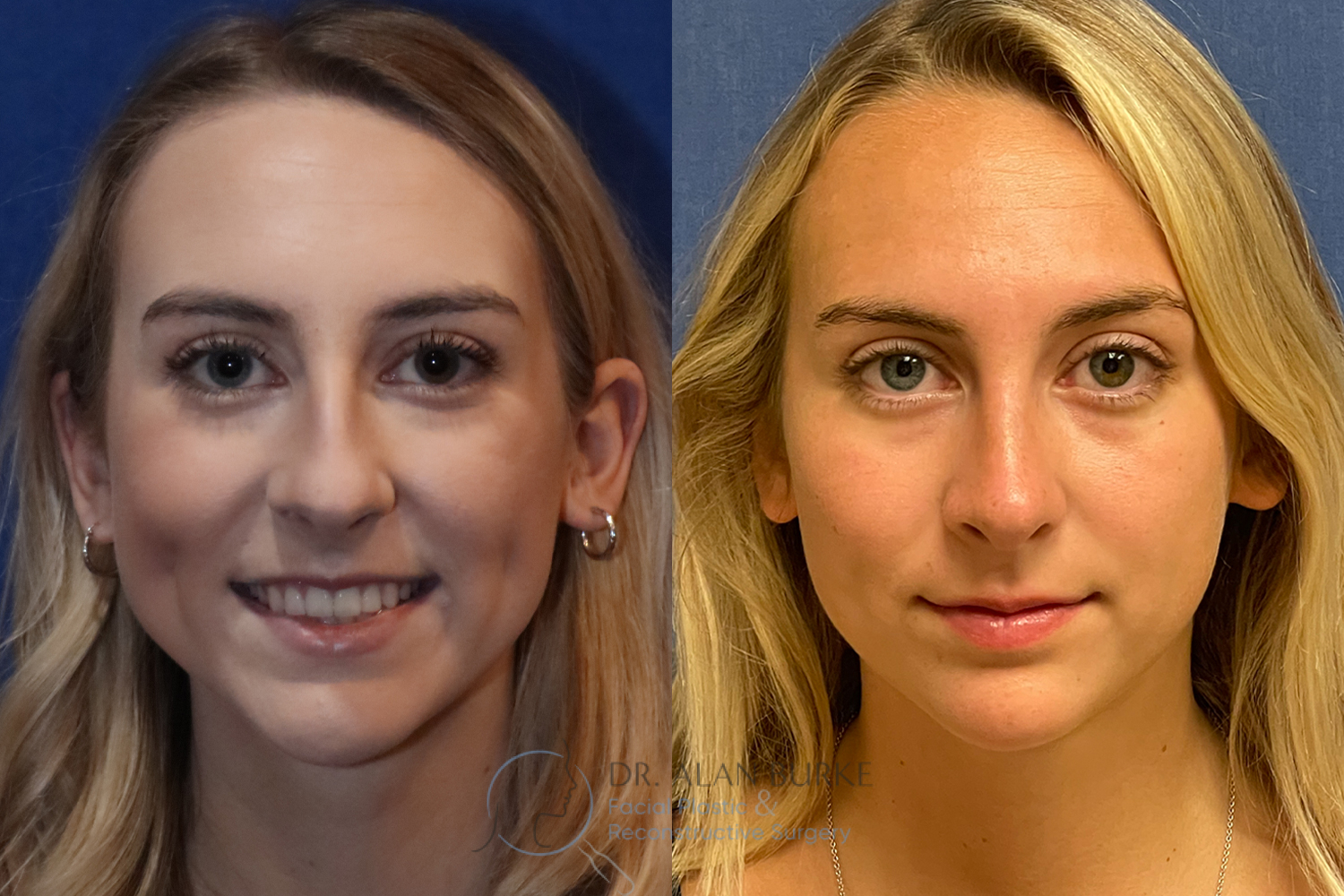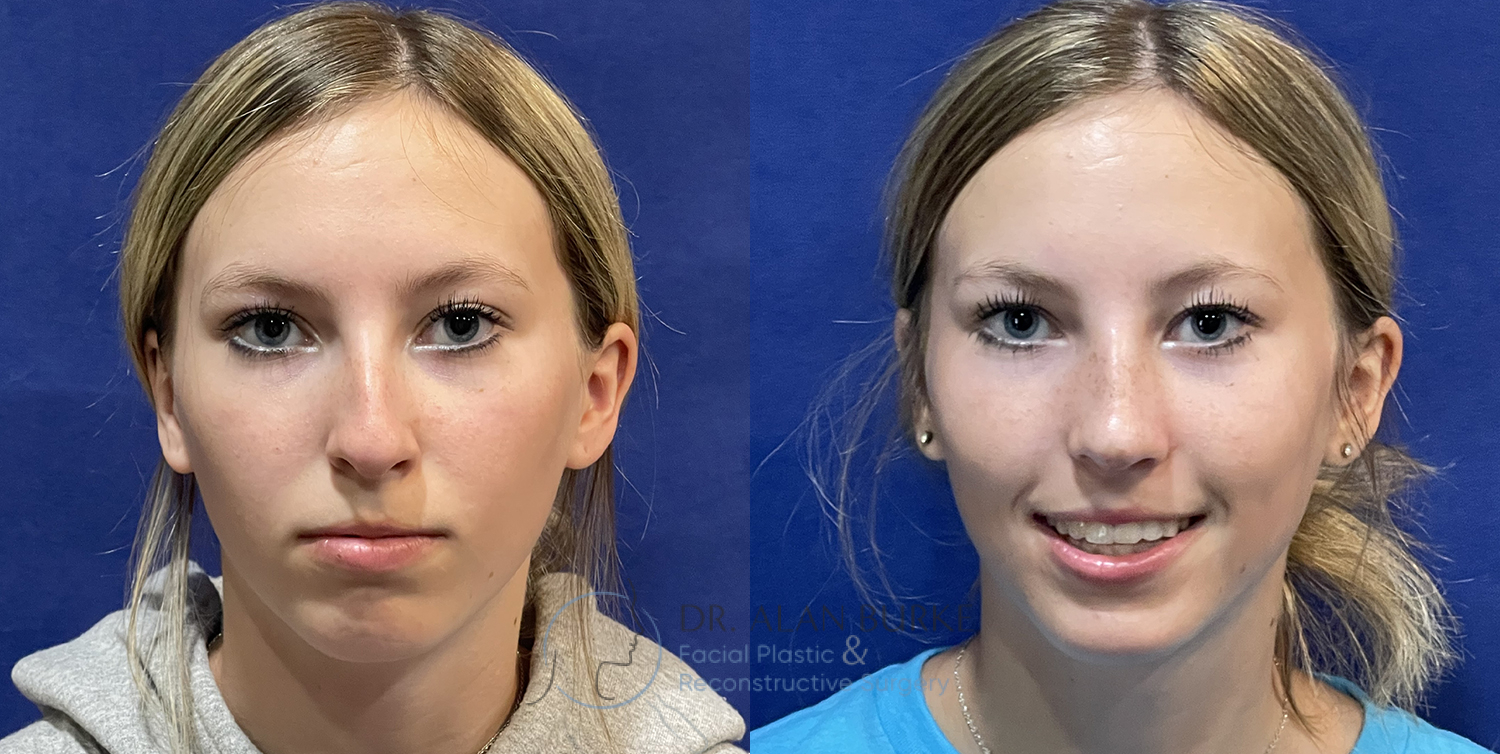Case Details
Saddle Nose Deformity
___
Dr. Alan Burke
INTRODUCTION
A saddle nose refers to a nose where the nasal bridge has become “saddled”, or dipped, too low for the projection of the nasal tip and aesthetically imbalanced.
This can be both an aesthetic problem and a functional problem. The aesthetic or look of some saddle noses can be referred to as the “pugilist” or the boxer’s nose, a squashed look. Because of a dip in the nasal bridge, the nasal dorsum or roof of the nose can pinch into the nasal airway, creating a form of nasal valve compromise, or airway stenosis, functionally an nasal airway obstruction.
The saddle or depressed anatomy can come from either the bony portion of the nasal dorsum, or the cartilaginous portion, in the mid nasal vault. In correcting the saddle nose, the source problem mainly determines the variety of reconstruction, though often a combination approach is planned for best balance between aesthetics and function.
Saddle nose surgery often requires structural grafting. Preferably, nasal dorsal grafts (of many varieties) can be harvested from the nasal septum itself, from an area that does not require cartilaginous structure. There are times whereby rib cartilage (self or donor) or ear cartilage
may be used.
Interview and Consultation
This patient was most motivated to restore her nasal airway. This is not untypical, in that aesthetics can take a back seat if you are not breathing well or sinus trouble visits. Having said that, she used to work as a model, and so had interests in aesthetics as well, motivated to
restore her old nasal anatomy and aesthetics.
Physical Examination
There was a saddle nose of the cartilaginous portion of the nasal dorsum, of moderate severe variety. The saddled anatomy crimped her nasal airway from the roof down, creating an audible nasal airway compromise or obstruction. There was loss of nasal tip support, the nasal tip having lost some of it’s “tent pole” anatomy, the tip becoming a little squashed-looking in the process. The tip rotated upwards from the changes in the saddled anatomy, creating too much of an exposed nostril look.
Surgical Plan
We planned to address this saddle both at the cartilaginous and the bony dorsum level. We used a spreader graft technique, restoring the normal dome anatomy of the nasal dorsum, uncrimping the nasal airway in the process. This did require rib cartilage grafting, using donor
rib, as her preference. There was still some raised nasal bony bridge, which was polished down, or rasped, to match the height of the cartilaginous dorsum.
The nasal tip was reprojected using a lateral crural steal technique, bolstered by septal cartilaginous grafting. Better tip definition was achieved by suture-shaping techniques. An extended septo-columellar extension graft was used to restore her supporting septum or tent
pole anatomy onto which her dome anatomy could be resupported.
Postoperative Results
Post operatively, she could breathe much better immediately, though her very best airway did take some weeks yet to be achieved, swelling and surgical healing needing more time.
We were able to restore her pre-saddle nasal appearance very closely. She had a smooth nasal dorsum, with well defined, well projected nasal tip anatomy. She felt like we had restored her whole self, not just her nasal anatomy. She breathed like a champ too.
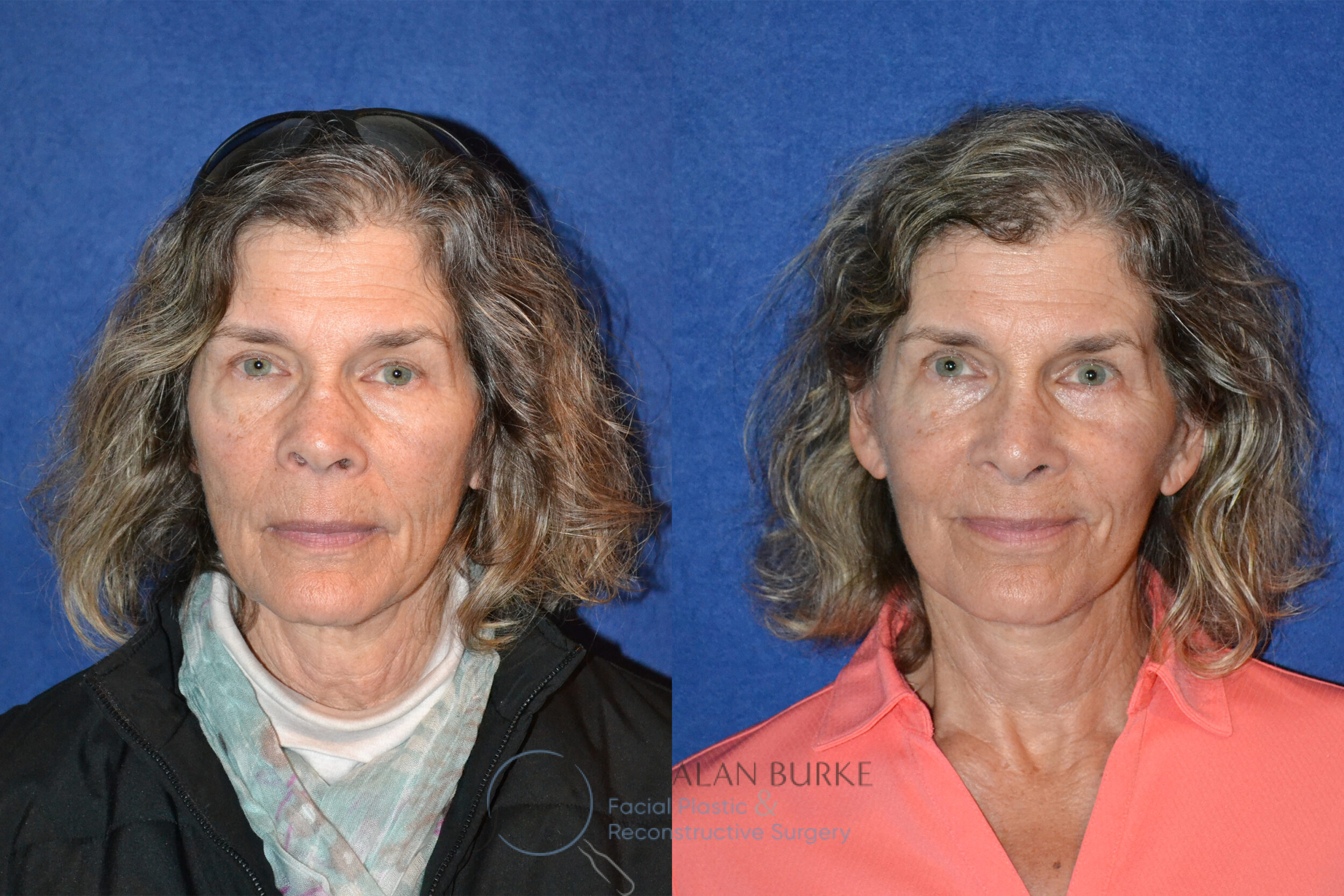
Before
After
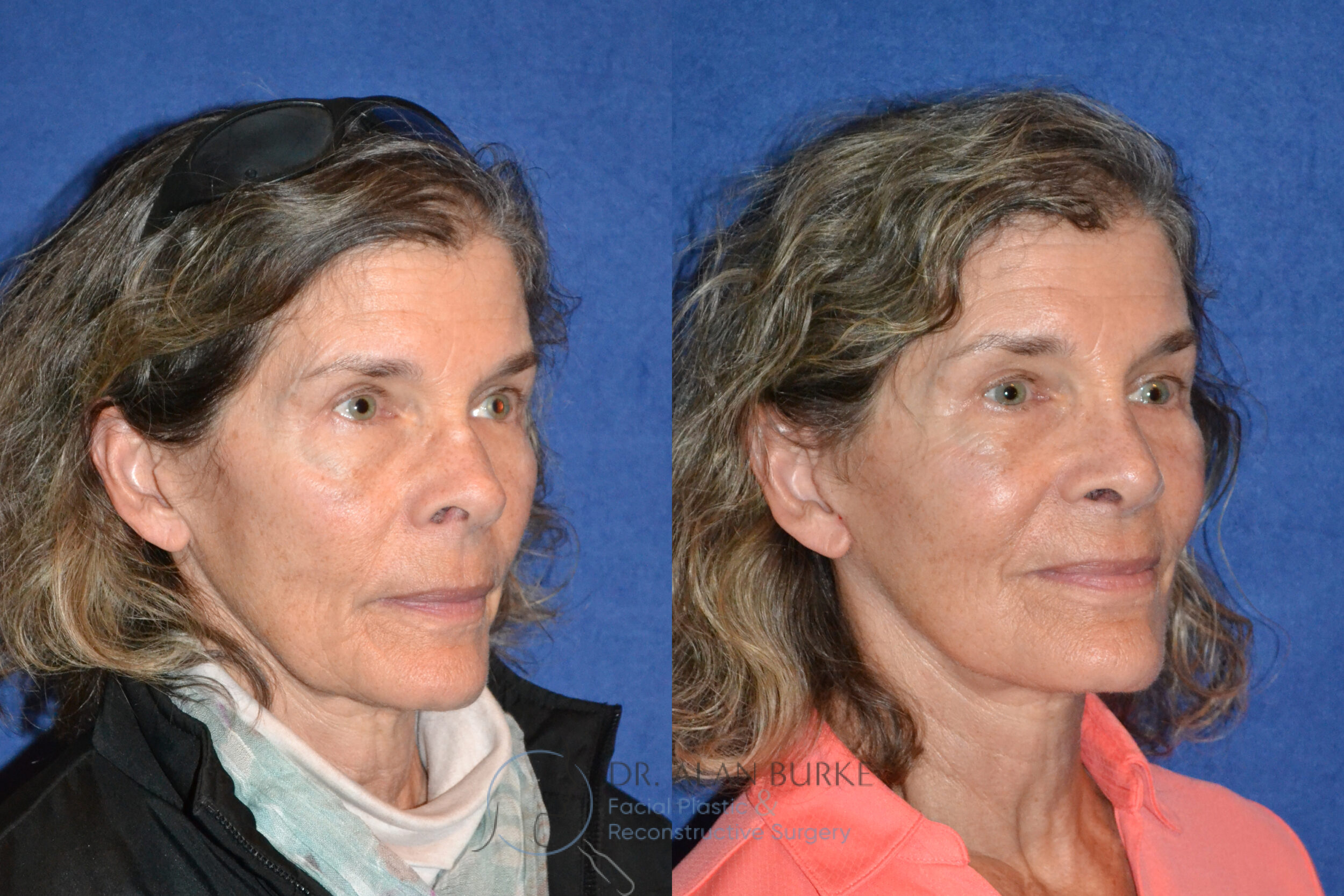
Before
After
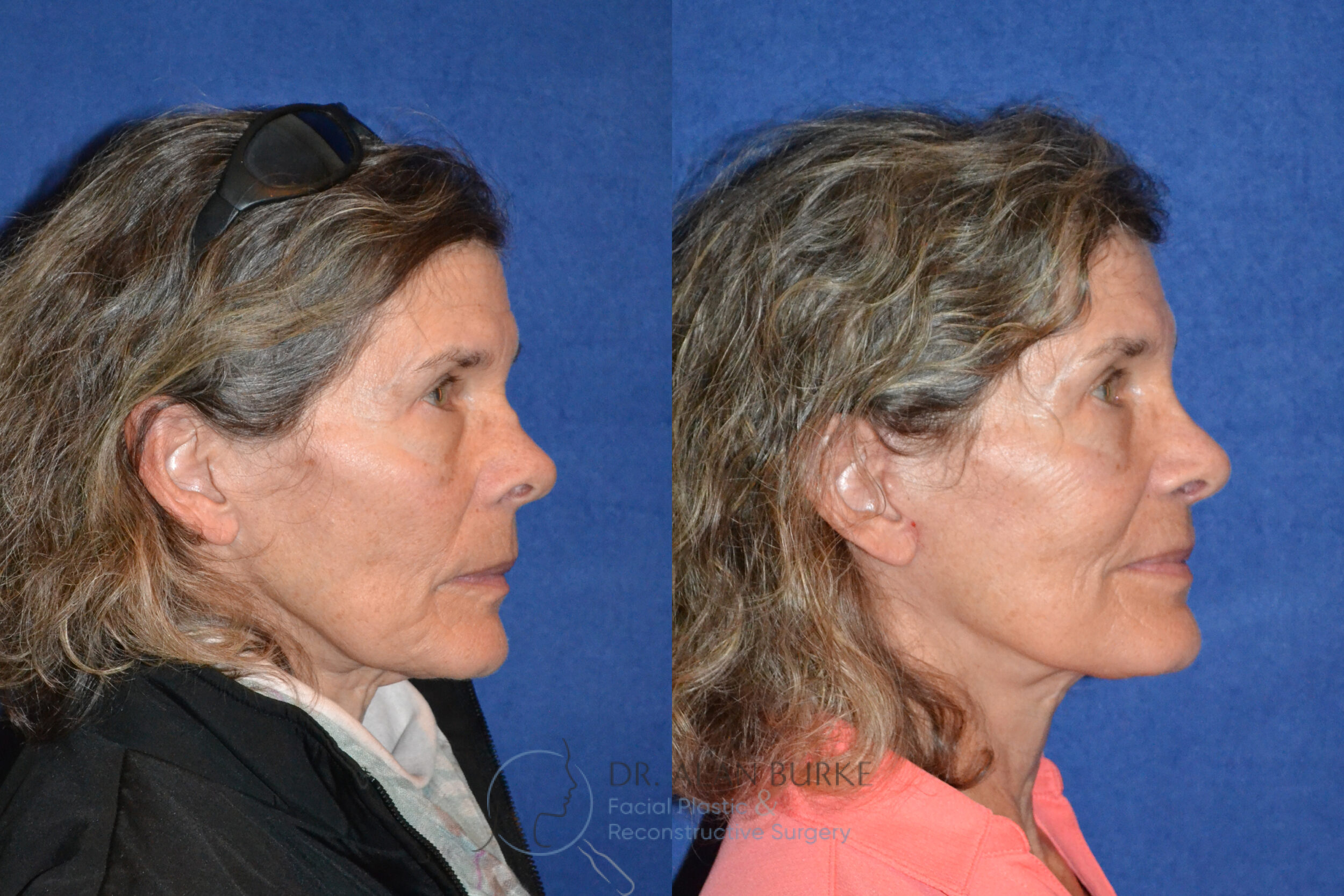
Before
After
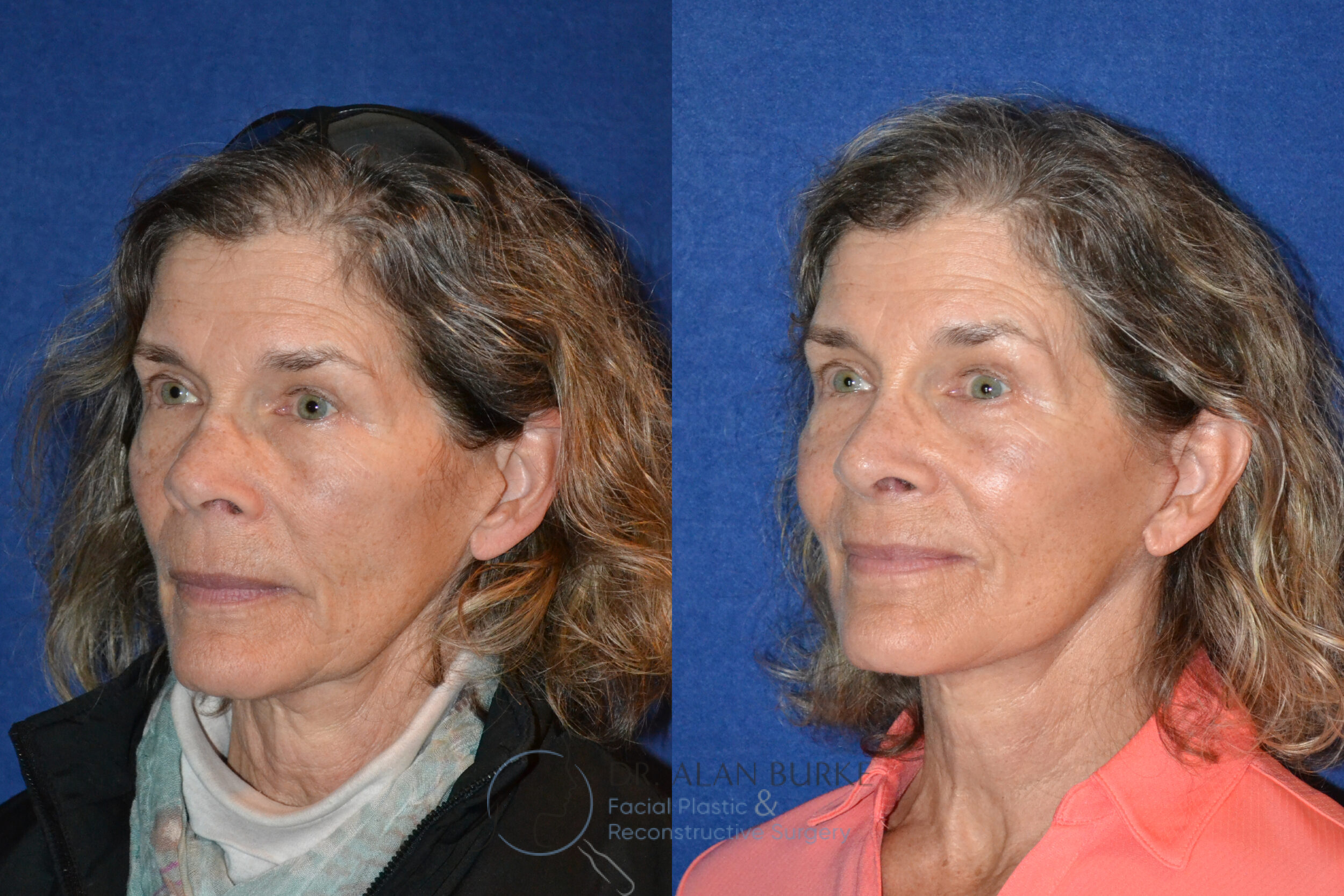
Before
After
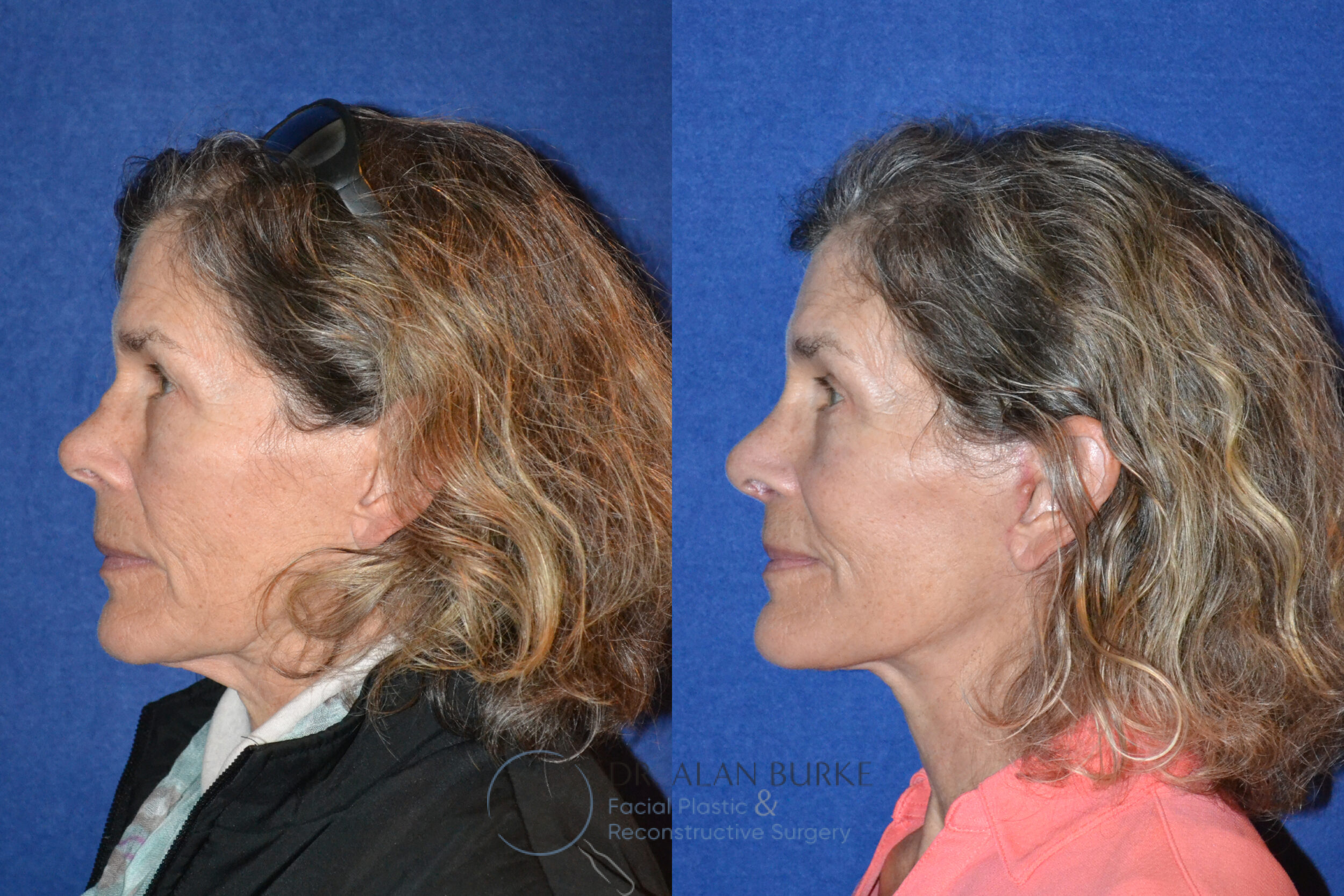
Before
After
